Château La Gaffelière
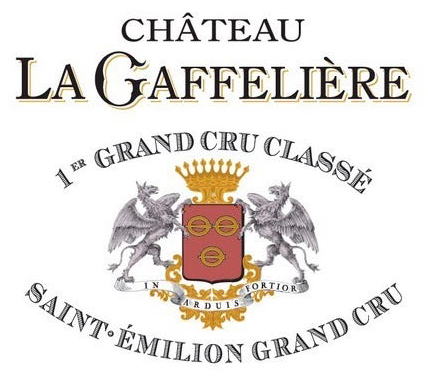
The Estate
The historic vineyards of Château La Gaffelière have their origins way back to the Gallo-Roman era. In the 17th century, the chateau was acquired by the Malet Roquefort family, one of the oldest families in the region who had been in the area for about 4 centuries. These ties to the past give the family a deep respect for tradition in the winemaking process.
The estate spans 25 hectares, 22 of which are situated between the hill of Château Ausone and Château Pavie. The vineyards are planted on a clay-limestone soil and are oriented ideally towards the south which gives excellent sun exposure to the approximately 35 year-old vines. The grape varieties planted are 80% Merlot and 20% Cabernet Franc. Harvesting is manually done – the grapes are sorted carefully and then totally destemmed. Parcel vinification is done in thermo-regulated stainless steel vats.
Owners: Comte de Malet Roquefort
Managers: Comte de Malet Roquefort and Alexandre de Malet Roquefort
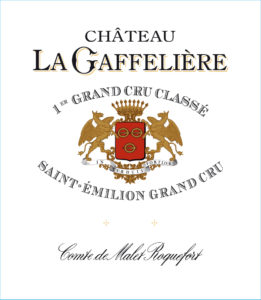
Château La Gaffelière Saint-Émilion 1er Grand Cru Classé
Grape Varieties: Cabernet Franc, Merlot
Vinification: The grapes are placed into small crates and put straight into cold storage (8°C) for one night. The next morning, bunches are mechanically de-stemmed and grapes are sent to the optical sorting machine by a conveyor belt. The sorted grapes fill the vats by natural gravity as they are located below the sorting area. Entirely renovated in 2013, the vat room is composed of 20 temperature controlled tanks, made of stainless steel and shaped like an upside down truncated cone. This new space dedicated to vinification is high tech, innovative, aesthetic, and practical. However its architecture remains traditional through its stone walls and wood frame. Each plot is worked individually, in order to extract the best expression of its terroir. Gentle pumping over and punching down pace the alcoholic fermentation. Then some lots are barreled for the malolactic fermentation, while the others remain in tanks for this process.
Aging: Aging process follows the plot by plot management as well. As the underground cellar is below the vat room, natural gravity is also used to barrel the wine. 50% new French oak barrel are purchased every year. Under a dome of concrete, with control of temperature and humidity, the wine will age quietly for 14 to 16 months.
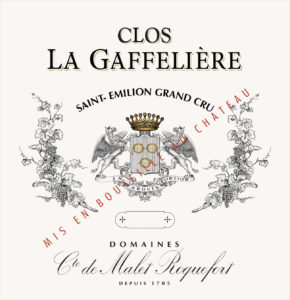
Clos La Gaffelière Saint-Émilion Grand Cru
Overview: Clos La Gaffelière is the second label made by the team of Château La Gaffelière. Established in 1985, Clos La Gaffelière has its own vat room and cellars.
Production Area: 38 hectares, of which 22 are 1er Grand Cru Classé
Soil: Clay-limestone
Grape Varieties Planted: 70% Merlot, 30% Cabernet Franc
Grape Variety Blend: The blend is usually a large majority of Merlot (up to 90%) with the remainder being Cabernet Franc.
Viticulture: Sustainable agriculture. Double and single Guyot pruning, grassing of plots, leaf stripping, and green harvest. Manual harvest in crates.
Vinification: Grapes are sorted by density. Plot vinification in thermo-regulated steel tanks filled by gravity and without the use of sulfur. Vinification in whole bunches. Alcoholic fermentation with pumping over and punching down. Malolactic fermentation in tanks.
Aging: 12 months in 1-2 year old barrels (15% new wood). 3 rackings.
Tasting Notes: An authentic, pleasure-giving and easy drinking wine.
Château la Gurgue (Biodynamic)
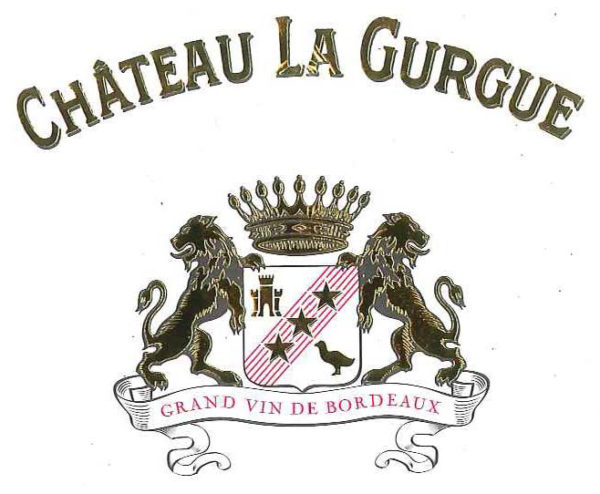
The Estate
The history of Château La Gurgue is closely linked to the village of Margaux. Successively, two owners of the vineyard competed for the town hall of Margaux and won. The first was a wealthy Portuguese banker, Mr. Peixotto. In 1871, he added some beautiful lands to the vineyard which were located around the parish of Margaux. Another mayor of Margaux, Camille Lenoir, later became the owner of Château La Gurgue. He gave his name to the Château and enriched it with some valuable plots surrounded by the vineyard of Château Margaux. They are located at Curton, on the best plots of Margaux. The Château then returned to its original name “La Gurgue”, which is a locality of the village. Claire Villars Lurton is the architect of this revival. Year after year, she works with the upmost delicacy to express the unique terroir of Château La Gurgue in her wine.
Owner: Claire Villars Lurton
Production Manager: Gérard Fenouillet
Winemaking Consultant: Eric Boissenot

Château La Gurgue Margaux
Surface Area: 10 hectares
Soil: Deep gravel and coarse sand on limestone
Grape Varieties: 50% Cabernet Sauvignon, 45% Merlot, 5% Petit Verdot
Average Age of the Vines: 30 years old
Plant Density: 10,000 plants/ha
Yield: 750 g/plant
Viticulture: Traditional and sustainable wine‐growing
Harvest: Hand picking. Main sorting on the vine and additional sorting on table
Vinification: Traditional. In concrete and wooden vats whose volumes are proportional to the plot. Fermentation on skins lasts 18 to 24 days.
Aging: In oak barrels for 12 months (25% new wood)
Annual Production: 40-50,000 bottles
Cellaring: 5 to 20 years
Tasting Notes: Full of subtleties, wrested from nature by precision and rigor in the work. Moderately strong but soft and elegant, with floral notes. The Cabernet Sauvignon is the backbone of the blend.
Château La Lagune (Organic)
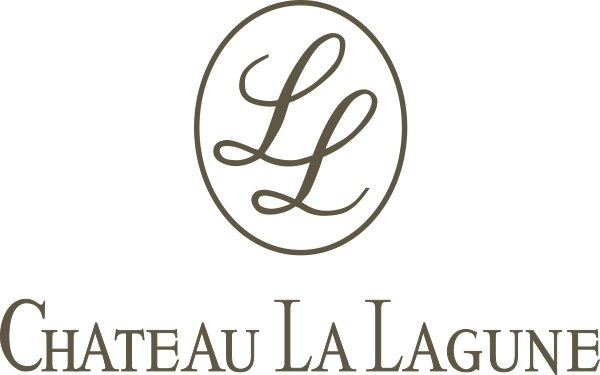
The Estate
Château La Lagune was established on the alluvial terraces largely dominated by gravel soils. In 1525, the ‘Village of La Lagune’ was founded in the area and, towards 1587, a certain Mr Eyral heralded the transformation of several modest vineyards into a single, larger vineyard holdings. Many owners then followed each other, with a Charterhouse built between 1730 and 1734 ; and in 1855 La Lagune reached the exclusive circle of classified growths to achieve the status of 3ème Grand Cru Classé. In 1886, La Lagune passed into the hands of the Sèze family who held it until 1956 when Georges Brunet arrived and launched La Lagune back to her former glory before passing his stewardship onto the owners of the Champagne House of Ayala in 1964. The year 2000 saw the Frey family arrive as the new owners of La Lagune. Having invested substantially in rejuvenating the vineyards, building a state-of-the-art chai, as well as in refurbishing the Château, La Lagune has once again been elevated to an estate of exception and excellence.
Caroline Frey is the current owner and oenologue for Chateau La Lagune. She has been working for many years to implement an environmentally friendly viticulture, based on practices from organic and biodynamic farming. Her goal is to preserve the soil and the vines, but also the health of the vine growers who work in the vineyard. The official transition to organic conversion was initiated in 2013, with certification planned for the 2016 harvest.

Château la Lagune Haut-Médoc 3ème Grand Cru Classé
Terroir: The soil of La Lagune has been described by the celebrated geologist Rene Pijassou as the absolute model of Médoc terroir. Comprising gravel and silica, this terroir breathes grace, balance, and smoothness into the Cabernet Sauvignon, Merlot, and Petit Verdot, characterizing the unique wines of La Lagune.
Production Area: 80 hectares
Grape Varieties: 60% Cabernet Sauvignon, 35% Merlot, 5% Petit Verdot (Percentages vary depending on the vintage)
Vinification: The grapes are all picked by hand and taken to the cellar in small crates. After meticulous manual sorting, followed by optical sorting, the best grapes are delicately put into vats for fermentation. The tannin and anthocyanins are gently extracted in order to obtain elegant wines. The final blend of wines from the finest plots are done during aging.
Aging: La Lagune is matured exclusively in French oak barrels, of which 50% is renewed each year. The wines are racked several times in order to eliminate the primary lees and allow for a refined aging. A final refinement with egg whites is completed just prior to bottling.
Alcohol: 13.5%
Cellaring: 20 years or more

Moulin de La Lagune Haut-Médoc
History: Château La Lagune was established on the alluvial terraces largely dominated by gravel soils. In 1525, the ‘Village of La Lagune’ was founded in the area and, towards 1587, a certain Mr Eyral heralded the transformation of several modest vineyards into a single, larger vineyard holdings. Many owners then followed each other, with a Charterhouse built between 1730 and 1734 ; and in 1855 La Lagune reached the exclusive circle of classified growths to achieve the status of Third Grand Cru. In 1886, La Lagune passed into the hands of the Sèze family who held it until 1956 when Georges Brunet arrived and launched La Lagune back to her former glory before passing his stewardship onto the owners of the Champagne House of Ayala in 1964. The Year 2000 saw the Frey family arrive as the new owners of La Lagune. Having invested substantially in rejuvenating the vineyards, building a state-of-the-art chai, as well as in refurbishing the Château, La Lagune has once again been elevated to an estate of exception and excellence.
Soil: The soil of La Lagune has been described by the celebrated geologist Rene Pijassou as the absoloute model of Medoc terroir. Comprising gravel and silica, this terroir breathes grace, balance and smoothness into our Cabernet Sauvignon, Merlot and Petit Verdot, characterizing the unique wines of La Lagune.
Grape Varieties: Cabernet Sauvignon 50%; Merlot 49%; Petit Verdot 1%
Alcohol: 13.5%
Serving Temperature: 16 -18°C
Cellaring: 10-15 years.
Food Pairings: Roast lamb, duck, and roasted vegetables.
Vinification: The grapes are gathered by hand and then transferred to the chai in small baskets where the berries are meticulously sorted; first by hand and then by high-tech tri-optic lasers. A gravity-controlled system then transports only berries of the best quality into the stainless steel tanks for the winemaking process to begin. Aging of the wine is completed in oak barrels according to traditional methods. The final assemblage of La Lagune’s three wines is then completed in the last phase of aging
Aging: La Lagune is matured in our chai in exclusively French oak barrels, of which 40% is renewed each year. The wines are racked several times in order to eliminate the primary lees and allow for a refined aging. After approximately 12 months of aging, a final refinement with egg whites is completed just prior to bottling.
Château La Mission Haut-Brion
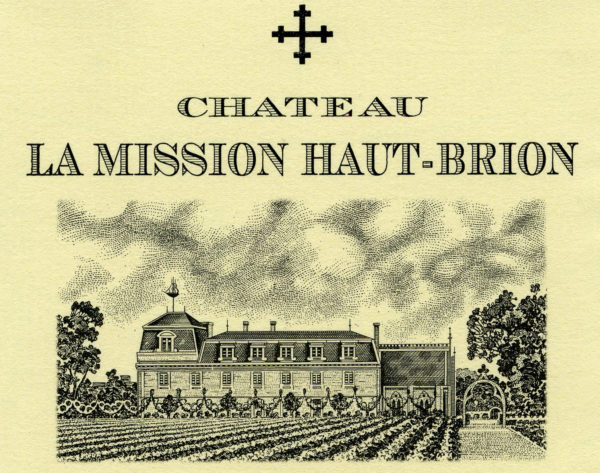
The Estate
In 1682, the Lazarist Fathers, a community founded by Saint Vincent de Paul, received this estate as a legacy from Madame Olive de Lestonnac. The monks worked hard for over a century to restore the estate to its former glory. Subsequent owners – a series of illustrious families – followed their example, up to and including the purchase by Domaine Clarence Dillon in 1983. Exceptional red and white wines from La Mission Haut-Brion are still marked by the magic of the Château’s unique history.

Château La Mission Haut-Brion Pessac-Léognan Cru Classé
Production Area: 26 hectares
Grape Varieties: 45.8% Cabernet Sauvignon, 43.8% Merlot and 10.4% Cabernet Franc
Average Age of the Vines: 27 years old
Soil: Deep gravel over clay, sand, and chalk in the topsoil
Altitude: 25 meters above sea level
Plant Density: 10,000 vines/hectare
Vinification: Vinified in 180 hl, temperature-controlled, stainless steel vats. The blending takes place shortly after malolactic fermentation is finished and before the aging process in barrel has started. The winemakers feel it is better to blend the wines before the influence of the wood begins to be felt in the wine.
Aging: In 100% new, French oak for an average of 22 months.
Annual Production: 6,000-7,000 cases
Manager: Jean-Philippe Delmas
2008 Reviews: “A muscular wine, with well-defined tannins. The acidity is high, hiding the power and richness of the fruit behind. Then dark tannins come through, with other ripe fruits, finishing with a mineral character.”-96pts, Wine Enthusiast

La Chapelle de La Mission Haut-Brion Pessac-Léognan
Production Area: 26 hectares
Grape Varieties: 45.8% Cabernet Sauvignon, 43.8% Merlot and 10.4% Cabernet Franc
Average Age of the Vines: 27 years old
Soil: Deep gravel over clay, sand, and chalk in the topsoil
Altitude: 25 meters above sea level
Plant Density: 10,000 vines/hectare
Vinification: Vinified in 180 hl, temperature-controlled, stainless steel vats. The blending takes place shortly after malolactic fermentation is finished and before the aging process in barrel has started. The winemakers feel it is better to blend the wines before the influence of the wood begins to be felt in the wine.
Aging: In 100% new, French oak for an average of 22 months.
Annual Production: 6,000-7,000 cases
Manager: Jean-Philippe Delmas
2015 Reviews: “Lush, offering gorgeous waves of plum sauce, cassis and steeped raspberry and blackberry fruit flavors that are infused with black tea, roasted apple wood and melted black licorice. The long finish lets everything cruise through, with a seamless feel. Almost approachable because of the polish, but there’s absolutely no rush here. A jaw-dropping display of powerfully rendered fruit. Cabernet Sauvignon, Merlot and Cabernet Franc. Best from 2020 through 2035.” – 93pts, Wine Spectator
2014 Reviews: “This is a finely perfumed wine with its dark tannins and juicy black-currant fruit. It has structure and a dense texture although this is filled with the bright acidity that gives the wine a lift. This will age well, so drink from 2021.” – 92pts, Wine Enthusiast
2009 Reviews: “A plush, modern style version, with a rounded feel to the spice-tinged structure that supports the fleshy blackberry and raspberry confiture flavors. Fruitcake and dark anise chime in the background and echo through the suave, well-coated finish. Best from 2014 through 2025. 5,800 cases made.”-92pts, Wine Spectator
Château la Pointe
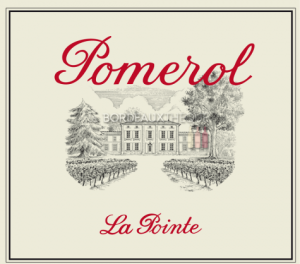
The Estate
With 22 hectares under vine, this is one of the largest estates in Pomerol. Consisting of only around 785 hectares, this bijou appellation produces some of the finest wines of Bordeaux. Not only is the appellation small to begin with, it is also sub-divided to an unusual extent, the average vineyard holding being just 5 hectares. Member of the Union des Grands Crus de Bordeaux.

Château la Pointe Pomerol
Owner: SCE Château La Pointe
General Manager: Eric Monneret
Vine and Wine Consultant: Hubert de Boüard de Laforest
Soil: Château La Pointe’s vineyards are located on the lower part of a terrace starting at Château Trotanoy. The soil here can be divided into three main soil types: gravel and round pebbles from Isle River terraces, clay-gravelly soil, and sandy soil on a layer of either clay or gravel.
Average Age of the Vines: 35 years old
Grape Varieties: Merlot 84%, Cabernet Franc 16%
Plant Density: 6,300 – 7,600 vines/hectare
Harvest: The grapes are hand-picked into small crates and sorted twice before vinification.
Vinification: The fermentations take place in temperature controlled vats in ideal conditions for the making of top quality wines. According to the grape variety, the soil type and the vintage, extraction may be by pumping over or by pigeage (punching down the cap of skins). Vatting generally lasts between 3 and 5 weeks. Half of the vintage undergoes the malolactic fermentation in barrel.
Aging: All the wines are then barrel-aged for 12 months, with just the right amount of new oak (around 50% depending on the vintage).
Annual Production: About 100,000 bottles of the gran vin, Château La Pointe
Alcohol Content: 14%

Ballade de la Pointe Pomerol
Overview: This second wine of Chateau la Pointe receives he same care and attention as the Grand Vin, and may be consumed in its youth.
Owner: SCE Château La Pointe
General Manager: Eric Monneret
Vine & Wine Consultant: Hubert de Boüard de Laforest
Appellation: Pomerol
Subregion: Rive Droite
Production Area: 23 hectares
Soil: Gravel and pebble soils of the Isle terraces, clay-gravelly soils, and sandy soils on clay or gravel.
Grape Varieties: Merlot, Cabernet Franc
Vinification: Traditional Bordelaise methods for vinification.
Production: 18,000 bottles
Cellaring: 10 years from vintage
Château La Tour Carnet
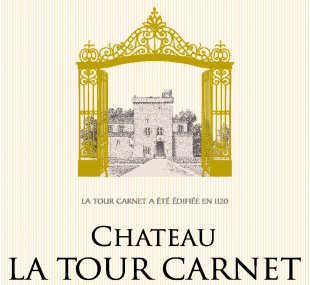
The Estate
Château La Tour Carnet dates back to the 12th century and is one of the oldest estates in the Médoc region. Named after the medieval squire who unfailingly helped his Lord to resist the French monarchy at the end of the Hundred Years War, La Tour Carnet played a major role in the revolution of Medoc vineyard. The medieval architecture features a tower built in 1120 and the château is surrounded by a moat. The vineyard of Château La Tour Carnet was planted there in 1407. La Tour Carnet has had several illustrious owners, including the family of Michel de Montaigne, one of the greatest French philosophers and twice-elected Mayor of Bordeaux. The quality of its wine was rewarded by the entry in the classification of 1855 Grands Crus. The diversity of its soils and the constant search for perfection make this Haut-Médoc an exceptional wine.

Château La Tour Carnet Haut-Médoc 4ème Grand Cru Classé
Appellation: Grand Cru Classé en 1855-Haut-Médoc
Location: Saint Laurent Médoc
Production Area: 123 hectares
Grape Varieties: 56% Merlot, 40% Cabernet Sauvignon, 3% Petit Verdot, 1% Cabernet Franc (percentages vary depending on the vintage)
Average Age of the Vines: 30 years
Plant Density: 8,000-10,000 vines per hectare
Soil: Clay subsoil with a large proportion of limestone covered by a deep layer of Günz gravel
Cultivation: Detailed-oriented viticulture. Thinning out of the leaves.
Harvest: Manual harvest in crates
Vinification: 1st sorting in the vineyard. Manual sorting on a vibrating table, followed by a destemming with a Pellenc Selectiv‘ process Winery. Optical sorting grape by grape. Cooling off of the harvest through a cryogenic tunnel freezer (spraying of liquid nitrogen). Vatting by gravity flow with a funnel. Fermentation in wooden vats and small capacity concrete tanks. Cold pre-fermentation maceration (8°C). Manual punching down. Alcoholic fermentation at low temperature (28°C). Maceration for 25 to 32 days.
Aging: In oak barrels for 16 months (30% new)
Consulting Enologist: Michel Rolland
Tasting Notes: Sight: Deep garnet color, with hints of mahogany and biscuit, signs of aging. The nose is complex. Notes of blackcurrant and plum appear in turn, followed by secondary aromas of spices, like cinnamon, and roasted notes of charred wood. Forthright flavor revealing the incredible finesse of well-rounded, perfectly balanced tannins. Roasted notes and ripe fruit on the palate. Balanced, full-bodied finish.
2012 Reviews: “Wood and mint aromas yield a wine that is darkly tannic, with a distinct black-coffee flavor. It’s a powerful, concentrated wine with fruit hiding behind the dense structure.” – 93pts, Wine Enthusiast

Seigneur de la Tour Carnet
Appellation: Médoc
Soil: Clay subsoil with a large proportion of limestone covered by a deep layer of Günz gravel
Grape Varieties: Merlot (50%), Cabernet Sauvignon (40%), Cabernet Franc, Petit Verdot (percentages vary depending on the vintage)
Age of the Vines: About 30 years old
Plant Density: 8,000—10,000 vines per hectare
Viticulture: Guyot pruning. Parcel-based management with sustainable methods. Thinning out of the leaves.
Harvest: Manual harvest into small crates with a first sorting in the vineyard
Vinification: Cold pre-fermentary maceration. Manual punching down.
Aging: In stainless steel tanks (70%) and French oak barrels (30%) for 16 months
Tasting Notes: The Seigneur de la Tour Carnet is the Second Wine of Chateau La Tour Carnet. The color is a deep, dense violet. A powerful nose with various aromas of black fruit and herbs. Subtle exotic aromas thanks to the wood ripening. A red wine that stimulates the palate from start to finish. Tannins give necessary texture to the wine without being too aggressive.

Les Pensées De La Tour Carnet Haut-Médoc
Appellation: Haut-Médoc
Location: Saint Laurent Médoc
Production Area: 123 hectares
Grape Varieties: 56% Merlot, 40% Cabernet Sauvignon, 3% Petit Verdot, 1% Cabernet Franc (percentages vary depending on the vintage)
Age of the Vines: 30 years old
Plant Density: 8,000 to 10,000 vines per hectare
Soil: Clay subsoil with a large proportion of limestone covered by a deep layer of Günz gravel
Viticulture: Detailed-oriented. Thinning out of the leaves (1st after July 20th on the eastern side of the vineyard, 2nd after August 13th on the western side)
Harvest: Manual harvest into small crates with a first sorting in the vineyard
Vinification: Cold pre-fermentary maceration. Manual punching down.
Aging: In French oak barrels (one-year old barrels) for 15 months
Château La Tour de Ségur
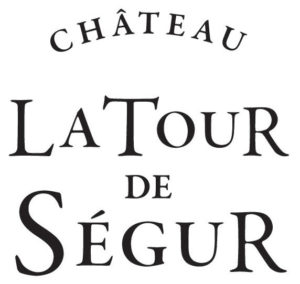

Château La Tour de Ségur Lussac Saint-Émilion
Grapes: 90% Merlot, 10% Cabernet Franc
Vinification: Alcoholic fermentation in stainless steel vats (30 days). Malolactic fermentation in partial barrels. Sorting carried out on an automatic table with alternating small pumping-over operations with manual watering of the marc, use of a vertical cage press with selection of press wines, maturing in separate batches until final blending.
Aging: 1/3 in barrels (35% new barrels, 35% one-wine barrels, 30% two-wine barrels), 1/3 in vats under staves for 6 months and 1/3 in vats.
Tasting Notes: Purple color, expressive and elegant, with aromas of red fruits such as cherries. The flavor of red fruits is perceptible on the nose. The woodiness is well integrated and elegant tannins.
Food Pairings: Taste this A.O.C Lussac Saint-Émilion with stuffed mushrooms or steak to appreciate all its flavors.
2018 Reviews: “The 2018 La Tour de Segur is ripe, juicy and boisterous, all of which will make it easy to drink upon release. Crème de cassis, chocolate and sweet spice are all pushed forward. This racy, opulent Lussac Saint-Émilion is sure to be a crowd pleaser. The blend is 90% Merlot and 10% Cabernet Franc.” – 91pts, Vinous
Château la Tour Figeac (Biodynamic)
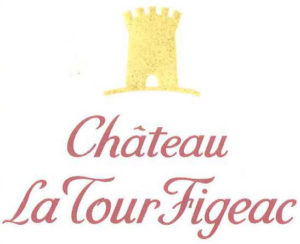
The Estate
Chateau La Tour Figeac owes its name to a tower which still existed on the grounds at the end of the 19th century. Lying beside the same road as Chateau Cheval Blanc to the east, Chateau Figeac to the south, and next to Pomerol on the west, it occupies a magnificent position in the Saint-Emilion graves and ancient sands area. With the object of improving the quality of the production, each wine is aged in an air-conditioned cellar in barrels made of oak from different forest areas until the wines are finally assembled ready for bottling. Depending upon the vintage, the barrels are renewed by between 30 and 50 percent. This estate is the property of the Otto Rettenmaier family from Heilbronn, Germany. Since May 1994, the estate has been under the supervision of Otto-Maximilian Rettenmaier (who studied management at the University of Mannheim) the son of the owner and himself co-proprietor. Aaron Pott, an American, has been looking after the vines and the winemaking facilities since that time. Pott studied at Davis University in California and gained experience in the States with Mondavi, Newton Vineyards, and Chateau Troplong Mondot in Saint-Emilion.

Château la Tour Figeac Saint-Émilion
Grape Varieties: The vines are naturally predominantly Merlot which accounts for 60% of the vineyard, the rest being entirely Cabernet Franc
Average Age of the Vines: 35 years old
Plant Density: 6,500 vines/ha
Viticulture: The vine husbandry is biodynamic, which means no chemical pesticides or treatments of any sort, and only biodynamically raised manure. The yield is limited by pruning, bunch-thinning, and green-harvesting.
Harvest: Manual
Average Yield: 40 hl/ha
Vinification: The winery has been the focus of some investment in recent years, with new thermo-regulated stainless steel vats but there has been a reversion to wood once again, replacing the steel vats installed 4 years previously. There is a mix of pumping over and punching down to submerge the cap, macerate the skins and increase extraction.
Aging: The wine is fed into oak barrels which may be 100% new in some vintages, and here it rests for up to 18 months for the grand vin Château La Tour Figeac (3,300 cases) and up to 12 months for the second wine, L’Esquisse de La Tour Figeac (1,250 cases). The former is generally dominated by Merlot, which account for 60% to 80% of the blend depending on the vintage, whereas the latter is much more variable and is sometimes predominantly Cabernet Franc, although in the 2000 vintage it seems to have morphed into a 100% Merlot named Cuvée M00. Remarkably there is no fining of the wines, although the wine may be filtered before bottling if deemed necessary.

L'Esquisse de La Tour Figeac
Overview: Second wine of Chateau La Tour Figeac, named Esquisse de la Tour Figeac, or “The Sketch of La Tour Figeac.”
Production Area: 15 ha (37 acres)
Age of the Vineyard: 25 years
Soil: Ancient sand and gravel
Grape Varieties: Merlot 65%, Cabernet Franc 35%
Vinification: In stainless steel tanks.
Tasting Notes: L’Esquisse de la Tour Figeac reveals a minty freshness on the nose. Red fruit notes and a touch of oak supported by supple tannins and fresh acidity make a very pleasant, pert wine.
Château Laffitte Carcasset

The Estate
The history of Château Laffitte Carcasset dates back to the early 18th century in the kingdom of France. The vineyard was established in 1759 at “Le Carcasset”, an area located in the heart of the Saint-Estèphe appellation.
In 1781, owner Jean Laffitte, lawyer and prosecutor of King Louis XVI in Bordeaux, gave his name to the estate. The beautiful white-stone country house, or chartreuse, is in the tradition of the great mansions of its time, with reception rooms that open on the vineyard and its magnificent century-old trees.
Surrounded by the classified growths of Saint-Estèphe, the 35-hectare vineyard is situated on a gravelly plateau where the Cabernet and Merlot varieties best express their potential.
Château Laffitte Carcasset has been Cru Bourgeois since 1932 and a family vineyard from its origins. Since 2016, it has belonged to Pierre Rousseau and his family.

Château Laffitte Carcasset Saint-Estèphe Cru Bourgeois Supérieur
Classification: Cru Bourgeois Supérieur
Owner: Pierre Rousseau
Oenologist: Hubert de Boüard
Appellation: Saint-Estèphe
Surface Area: 35-hectares
Certification: HVE 3
Terroir: Garonne gravel soil and clayey limestone
Grape Varieties Planted: 60% Cabernet Sauvignon, 35% Merlot, 5% Cabernet Franc
Average Age of the Vines: 30 years old
Harvest: Manual and mechanical.
Vinification: Plot vinification. Fermentation in the new gravity cellar. Stainless-steel and concrete vats. Slow and gentle extraction.
Aging: 12 months in oak barrels (40% new oak)
Château Lafite Rothschild
The Estate
“Lafite has a soul, a beautiful, generous, kindly soul. Lafite turns bare earth into heaven. Lafite is harmony, a harmony between man and nature, because without our magnificent winegrowers, nothing would be accomplished.”-Baron Eric de Rothschild
In 1815, Guillaume Lawton said of Château Lafite, “I consider it to be the the most elegant and delicate, with the finest substance of the three (Premier Crus). The location of its vines is one of the finest in the Médoc”. In 1855, the Château was ranked as a Premier Grand Cru in the famous classification that was prepared for the Universal Exhibition of that year.

Château Lafite Rothschild Pauillac 1er Cru Classé
Grape Varieties: 80-95% Cabernet Sauvignon, 5-20% Merlot, 0-5% Cabernet Franc and Petit Verdot. Note that there are some exceptional cases such as the 1994 vintage (99% Cabernet Sauvignon and 1% Petit Verdot) or the 1961 vintage (100% Cabernet Sauvignon).
Aging: In oak barrels, 18 to 20 months in 100% new barrels
Annual Production: About 16,000 cases
Decanting: 2 hours or more
Serving Temperature: 16 -18°C
2007 Reviews: “The tannins are dense, very dry with a feel of extraction. It takes a while for the black currant fruit to show through, with acidity and freshness dominant. The wine is still settling, and time will bring the fruit into line with the tannins.”-94pts, Wine Enthusiast
Château Lafon-Rochet
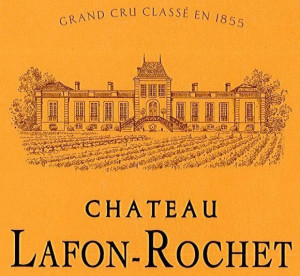
Overview
Chateau Lafon-Rochet is located in the Saint-Estèphe region of Bordeaux. Today there are 45 hectares of vineyards here, of which 40 hectares surround the château, while the remaining 5 hectares lie in a single plot approximately 1 kilometer to the north. The vineyards around the château sit on a plateau which they share with the vineyards of Cos d’Estournel and Cos Labory.
History
Lafon-Rochet’s history dates back to the 17th century. The property was then known as the Domaine Rochet and belonged to Antoinette Guillemotes who renamed the estate Château Lafon-Rochet after her marriage with Etienne de Lafon. The Tesseron family took over the estate in 1960. When in 1960 Guy Tesseron, a master of old Cognac, took over the property, he had to start from scratch and rebuild the whole property. Thus began Chateau Lafon Rochet’s rebirth.
Michel Tesseron first decided to renovate and modernize all the technical equipment necessary for production, like the magnificent circular, wooden wine cellar. In so doing he preserved the family’s core values of sharing, respecting the vines and vineyard and thus fulfilled his father’s dream. In 2007, Basile Tesseron joined his father in order to continue the work started by his grandfather, who had already initiated the young Basile into the subtleties of the aromas and flavours of cognac.
With passion, humour and ambition, Basile pursued the work of his predecessors enabling Lafon-Rochet to live on through the centuries. He began by redesigning the vat room of the property, reviving the quest for excellence and quality in keeping with the exceptional terroir and the human and family values that have punctuated 5 centuries of adventure. Lafon-Rochet is a story of wine, men and taste.
The Terroir
Acreage: 41 Ha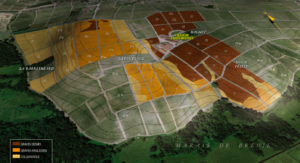
Soils: 3 different soils : clay on gravel, clay, and sand.
Grape Varietals: 57% Cabernet Sauvignon, 37% Merlot, 4% Petit Verdot, 2% Cabernet Franc
Harvest: Manual
Vine density: 9.000/Ha
Average age of the vine: 37 years old
Average yield: 40-50 Hl/Ha
Vinification
The grapes are always harvested by hand; an experimental venture using machines for the harvest was carried out in 1986 but was deemed a failure. The grapes are sorted twice before fermentation in stainless steel vats which range in size from 230 hectolitres down to 20 hectolitres. The temperature is controlled to a maximum of 30ºC, with pumping over to submerge the cap as required. Subsequently, the wine is macerated for up to 2 weeks, before malolactic fermentation in tanks and barrels. The entire crop is aged for up to 20 months in oak barrels, half of which are new wood for each vintage. The wine undergoes fining or light filtration prior to bottling.
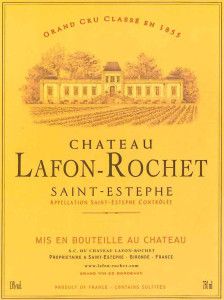
Chateau Lafon Rochet Saint-Estèphe
Overview: The grapes used for this wine come from the oldest vines of the vineyard; they bear less fruit but offer greater complexity. Lafon-Rochet is a wine that is both simple and complex-it expresses aromas of black fruit in most vintages. This is truly a blend with features specific to Saint-Estèphe, a certain warmth and roundness, full of delicacy coming from the Merlot grape varietal.
Production Area: 45 hectares
Average Yield: 44 hl/hectare
Soil: Deep gravel and clay
Average Age of the Vines: 40 years old
Grape Varieties: Merlot, Cabernet Sauvignon, Cabernet Franc, Petit Verdot
Harvest: By hand into small crates
Aging: 16-18 months in light to medium toast French oak barrels (50% new wood)
Alcohol Content: 13%
pH: 3.56
Acidity: 3.38
Winemaker Notes: “The nose is pleasing, open, fruity, and oaky with notes of fresh pepper. The wine is agreeable and elegant in the mouth, with a subtle attack despite the boldness and power of the mid-palate and finish. The aromas are fruity, smoky and salty. This is a well-made and nicely structured wine.”
Food Pairings: Meat dishes and barbecue
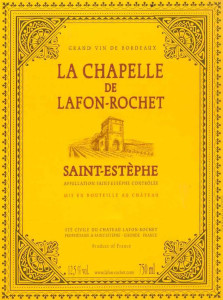
La Chapelle de Lafon-Rochet Saint-Estèphe
*Second wine of Chateau Lafon-Rochet
Production Area: 40 hectares
Age of the Vineyard: 15 years old
Annual Production: 10,000 bottles
Varietal Blend: 55% Cabernet Sauvignon, 40% Merlot, 5% Cabernet Franc
Harvest: Manually done
Vinification: The grape juice is left in vat anywhere between 15 days to 3 weeks. Fermentation lasts 6-8 days in thermo-regulated tanks.
Aging: The wine is matured in casks for 15-20 months in 40% new wood. Light fining is done using egg shells.
Tasting Notes: This second wine of Lafon-Rochet is rich, full, and concentrated; well-balanced and smooth on the palate.
Chateau Lagrange
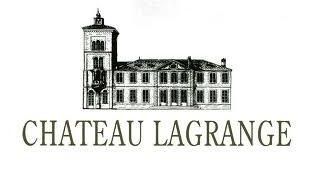
The Estate
This estate was a place of great agricultural activity centuries ago. Initially called “Villa Rustica” in Gallo-Roman times, it was renamed “Grangia” in the Middle Ages which was the origin of the estate’s current name, Chateau Lagrange.
Lagrange discovered a vocation for winegrowing thanks to the Templars who united 2 domains: the “maison noble de Lagrange de Monteil” to the west joined the “Tenure of Pellecalhus” to the east. In the present-day vineyard, the names of two vine plots hearken back to this era, “l’Hôpital” and “La Chapelle.” After this unification, Lagrange became the largest wine producing estate in the Médoc.
In the early 18th century, Baron de Brane, a Bordeaux parliament member and owner of Mouton, acquired the property and its renown became more widespread.
In 1790, Jean-Valère Cabarrus, an influential merchant known to be very active in the shipping business, invested in the property and established his own sales network. In 1820, he commissioned Visconti to build the Tuscan-style tower that was to become the emblem of Château Lagrange.
During a trip to Bordeaux in 1785, Thomas Jefferson (then President of the United States), judged Lagrange second among the Third Classified Growths. In 1855, Lagrange was officially ranked among Third Classified Growths, thanks to the work of Count Duchâtel, owner from 1842-1874.
The Japanese group, Suntory, acquired the domain when the purchase was signed by the company president, Mr Keizo Saji, in 1983. Marcel Ducasse was then recruited along with Kenji Suzuta to undertake the complete restructuring of the vineyard and a spectacular renovation of the whole estate. After 20 years of dedicated work, as well as human and technical investments, Lagrange has once again found recognition amidst its peers and had achieved a certain sense of fulfilment.
Today, Matthieu Bordes and Keiichi Shiina have taken over this quest for excellence. A second phase of investments began with the 2008 vintage, offering Lagrange the technical means to follow its ambitions: The production of refined, elegant, and expressive wines, in the best Saint-Julien style. There has also been an evolution of production methods towards a greater awareness of the environment and a reduction of ecological impact on the property.
This philosophy is reflected not only in the respect shown for the domain’s history, and the nurturing of its truly exceptional terroir, but also in the unique experiences shared all over the world around a glass of one of Lagrange’s wines.
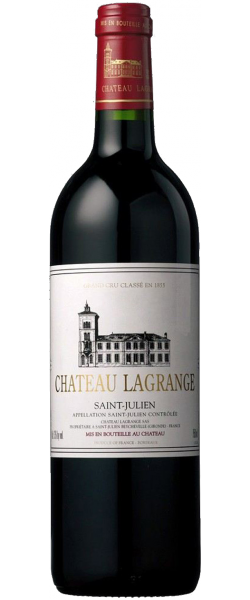
Saint-Julien 3ème Cru Classé
Location: Completely situated in the village of Saint-Julien, the estate is spread over 2 hills with the slopes directed towards the North and the South.
Soil: The subsoil is of clay and limestone and the topsoil is made of pebbles and gravel.
Production Area: 111 hectares in red vines.
Grape Varieties: Cabernet Sauvignon, Merlot, and Petit Verdot.
Plantation Density: 7,500-10,000 vines per hectare
Average Age of the Vines: 40 years old
Vines: “Medocain” fixation on 3 wires to get the best sun exposure possible. Pruning to control the yield (4 to 6 buds left). Controlled phytosanitary treatments. Thinning of the extra grapes in July. Thinning out of the leaves in July on both sides of the row to improve the air circulation an reduce the level of humidity in the grapes. Maturity checking per plot
Harvest: Hand picking into individual crates. 120 pickers on average recruited according to the daily needs by a specialized agency, allowing a considerable flexibility of harvest to optimize the ripeness. Last sorting grape by grape with an optical camera. Plot by plot vinification in 98 stainless steel vats of which 78 are small capacity (66 to 90hl). Co-inoculation allowing simultaneous alcoholic and malolactic fermentations in the aim of protecting the wine and reducing the manipulation throughout the sensitive phase.
Vinification: First sorting by hand on whole bunches to eliminate those showing imperfections. Latest state-of-the-art de-stemmer less damaging for the grapes. Intra-plot selection thanks to 98 tanks. The contents of vats are selected according to the grape varieties, the age of the vines, the terroir, and the maturity. 220hl to 66hl stainless steel vats with thermo regulation. Moderate pumping-over everyday, pigeage. Maceration from 15 days to 3 weeks. Selection of free-run wine and of press wine. Blending selection of the Grand Vin (Château Lagrange) and the second wine (Les Fiefs de Lagrange) in February, following the harvesting. 12% of press wine in Château Lagrange. 40% Château Lagrange and 60% Fiefs de Lagrange.
Aging: Air conditioned cellars with regulated hygrometry. 60% of new oak barrels every year for Château Lagrange, maturing for 21 months. Maturing with the bung on top for about 6 months (2 top-ups per week). Racking every 3 months. Fining in barrel with fresh egg-whites — Final blending before bottling
Consultant Oenologist: Eric Boissenot
General Manager: Matthieu Bordes
Technical Manager: Benjamin Vimal
Tasting Notes: The Grand Vin boasts suave, powerful tannins with more precision than in the vintages 2006 and 2008, although not as much as the mythical 2009 and 2010. This remarkable vintage can be considered among the property’s greatest success. It will charm you with its elegance, depth and balance. Undoubtedly a vintage to be aged longer than the three previous vintages.
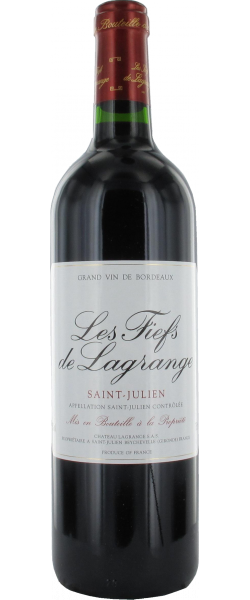
Les Fiefs de Lagrange
Overview: The second wine of the property was first produced in 1985 following the acquisition by Suntory group.
Average Age of the Vines: 30 years old
Soil: Gravel and clay
Vinification: Same methods as the Grand Vin, which produces a wine that is characterized by round tannins, aromas of red and black fruit in its youth, and good cellaring potential.
Grape Varieties: Cabernet Sauvignon, Merlot
Tasting Notes: Red in color with purple hues, a complex nose, with a rich mouth typical of this great vintage of Fiefs! Cherry, blackcurrant, licorice, and pepper aromas dominate the palate but also with a cool roundness that brings with it a certain elegance. A long finish.
2016 Reviews: “It has a very intense bouquet, especially for a Deuxième Vin, with pure black cherry, crème de cassis and crushed violets. The palate is medium-bodied with crisp acidity, quite tensile in the mouth and full of joie de vivre. You cannot really go wrong with Les Fiefs, and I bet it will be a great value once released.”-92pts, Wine Advocate
2015 Reviews: “This structured but also luscious wine is rich in fruit and tannins. A dense texture gives concentration, boosted by ripe blackberry fruits. The wine is still young and exuberantly full bodied, so wait to drink this second wine of Château Lagrange from 2022.” – 92pts, Wine Enthusiast



